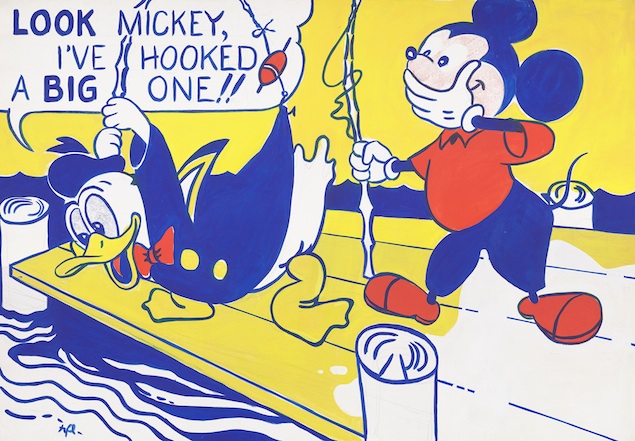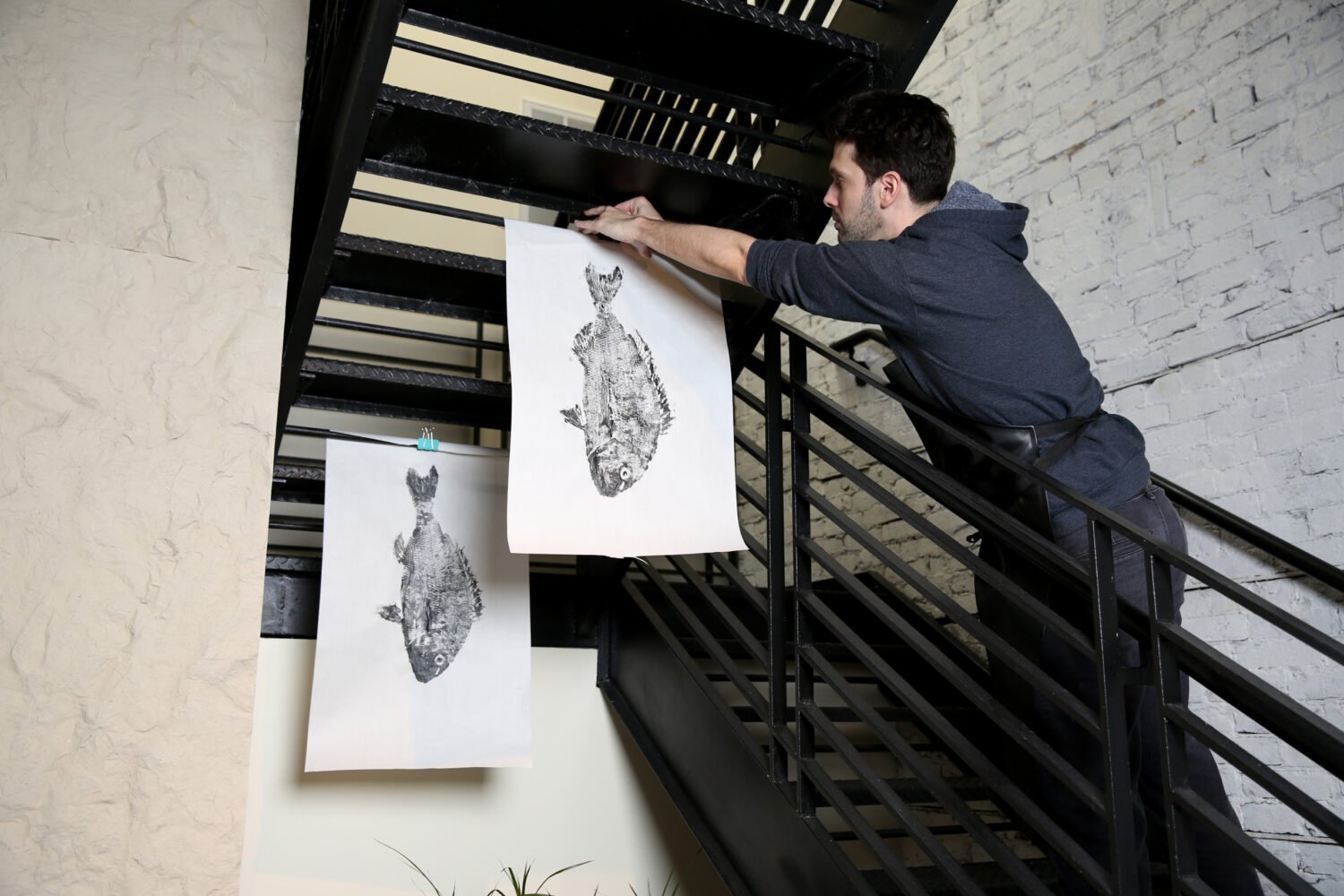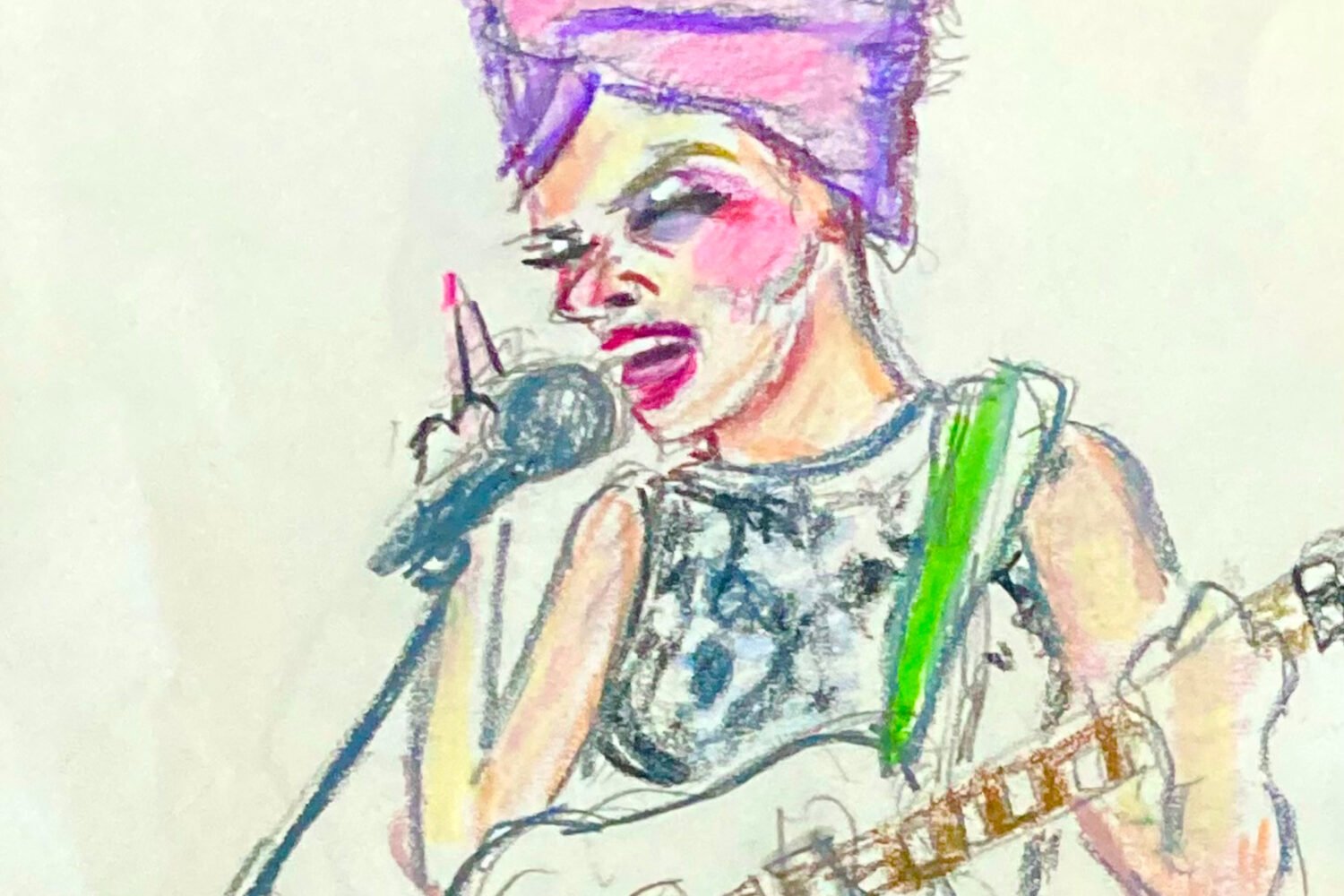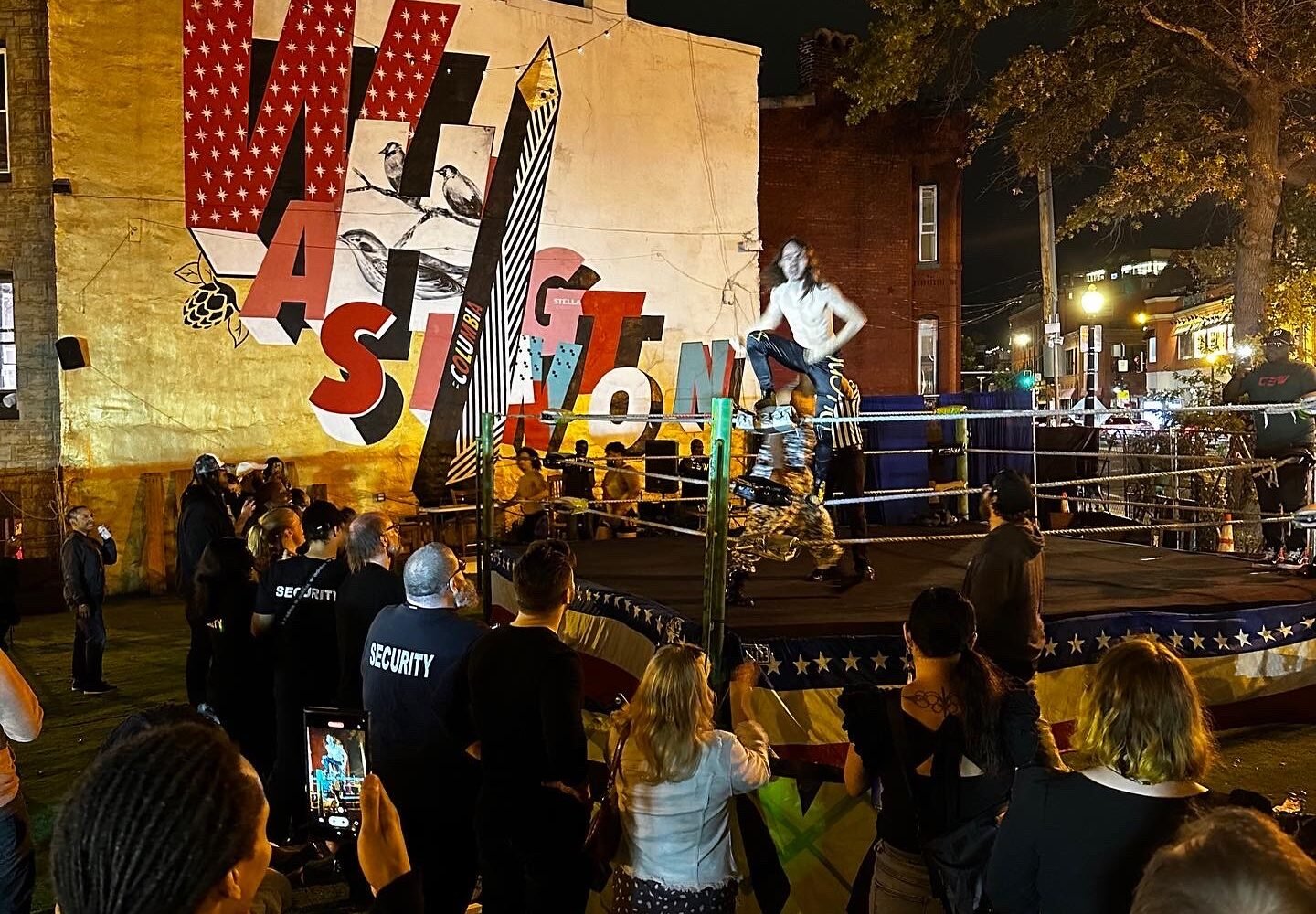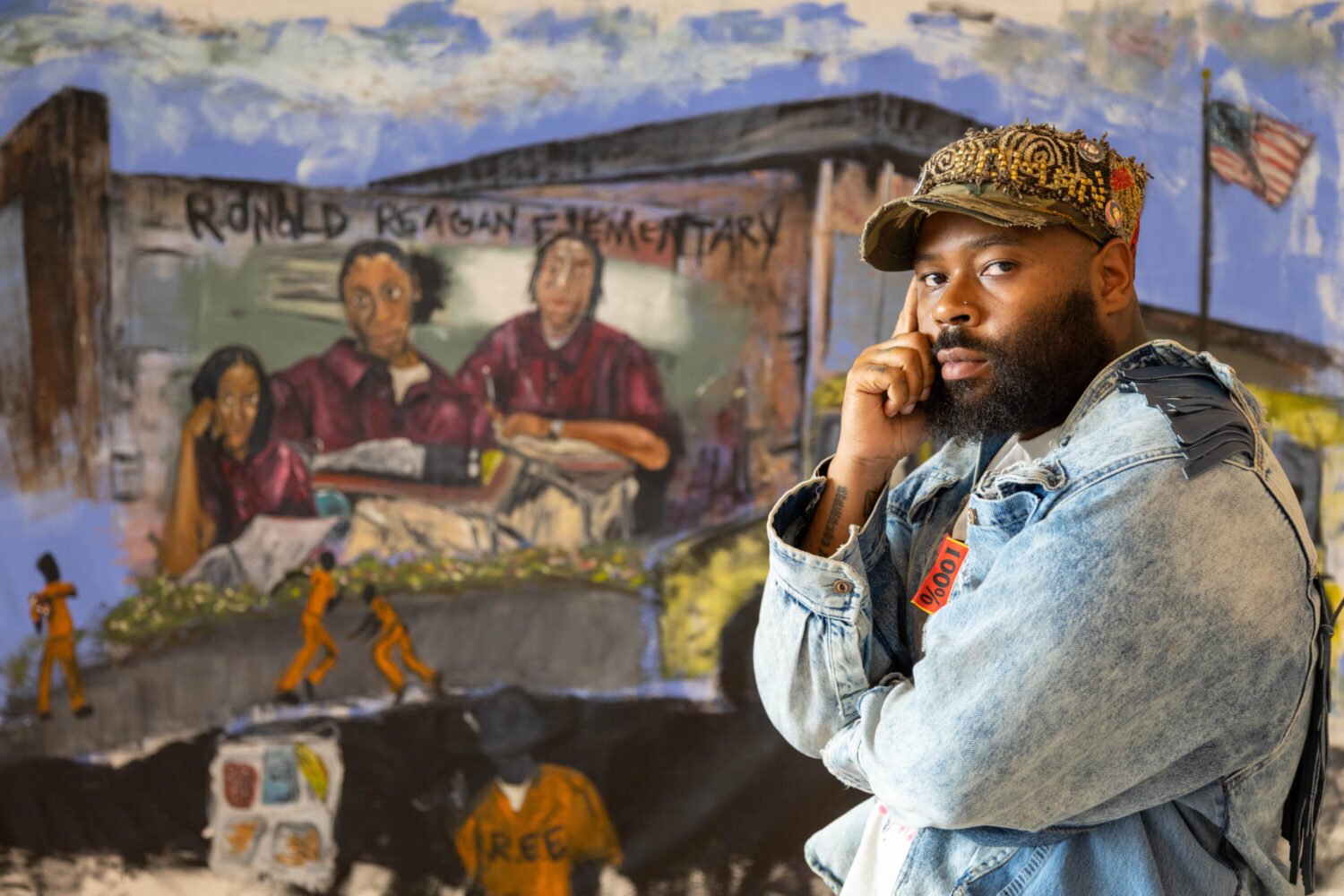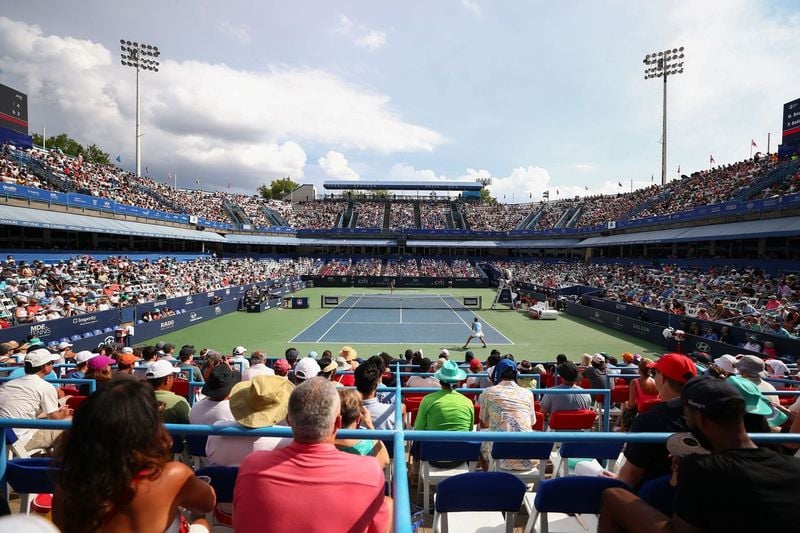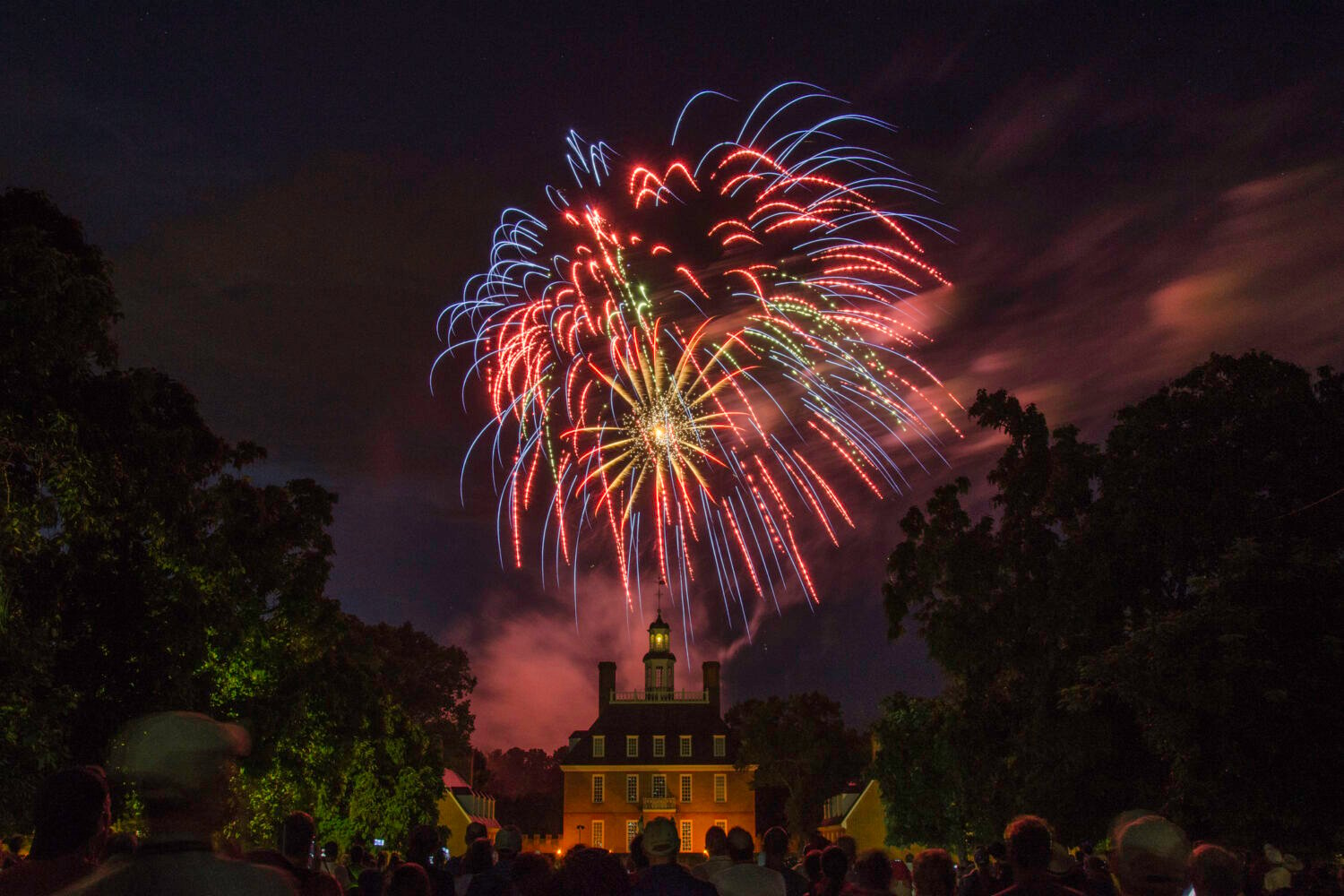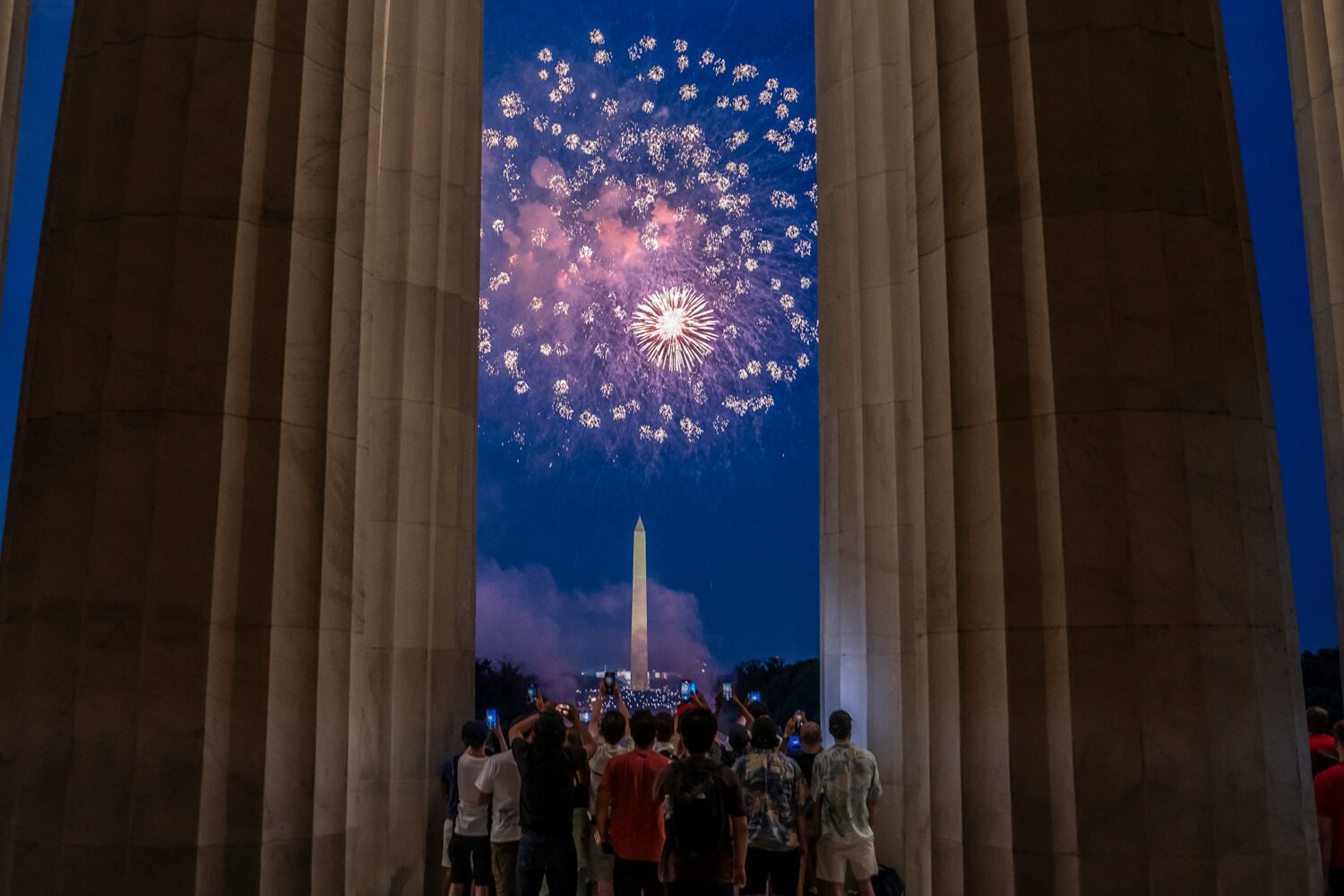Roy Lichtenstein was famously dismissive of people who tried to read too deeply into
his work. In an interview in the ’60s he declared his paintings to be “anti-contemplative,
anti-nuance, anti-getting-away-from-the-tyranny-of-the-rectangle . . . anti-mystery.”
His comic-strip paintings are almost deceptively simple, reproducing the mass-produced
in a painstakingly labor-intensive format.
And yet if ever a show offered thoughtful insight into
an elusive and unwilling subject,
it’s “Roy Lichtenstein: A Retrospective,” which comes to the
National Gallery of Art’s
East Building from the Art Institute in Chicago before heading
to Paris’s Centre Pompidou
and London’s Tate Modern. The first comprehensive look at
Lichtenstein’s oeuvre since
his death in 1997, the show transforms the East Building’s
multi-level exhibition
space into an oversize, overcaffeinated fiesta of sorts, with
more than 100 large-scale
paintings on display, as well as sculptures and studies. Most
works feel iconic, given
their oversaturation in the world of prints, postcards, and
even throw
pillows,
but the exhibition also lingers among Lichtenstein’s later
works, including his breathtaking
foray into Chinese landscapes.
The show’s structure feels largely chronological, so it starts in the late 1950s when
Lichtenstein was experimenting with abstract art. Untitled canvases from 1959 and
’60 feel messy and forgettable, with scribbles of color and daubs of paint, but the
bold primary colors segue nicely into 1961’s “Look Mickey,” the artist’s first comic-inspired
painting (he was reportedly challenged by his son to paint anything as good as a Disney
cartoon). The bright yellow background appears haphazard, but Donald’s eyes and Mickey’s
rose-tinted face are studded with spots—the first signs of the Benday dots Lichtenstein
made his trademark. Paintings from the same year immortalize ordinary household objects,
from a washing machine with primrose-colored suds to a pair of sneakers to a ribbon-adorned
foot stepping delicately on a small trash can painted with red daisies. In “Spray”
(1962), a hand with sharp, almost predatory red fingernails wields an aerosol can
like a weapon. While the fingernails gleam, reflecting the light, the hands are rendered
flat by tiny, uneven dots.
So much of Lichenstein’s work seems to be about attempting to create motion within
a two-dimensional image. In his aggressive, hyper-masculine war paintings, guns spit
out sound effects like “takka takka” and “bratatat,” and frenzied onomatopoeic words
crash into vivid jets of smoke and flames. Contrasted with the soft, languorous romance
of “Crying Girl” or “M-Maybe,” in which girls with soulful eyes and strips of flowing
hair gaze into the distance, the war paintings are oppressive in their scale and their
brutally simple color scheme. In the later “Explosions” series, paintings become enamel
sculptures, leaping off the wall in a barrage of different tones and textures.
The show’s “Landscapes” room, featuring works created between 1964 and 1967, does
even more to explore perspective and the art of trompe l’oeil. A bold red sun shoots
yellow rays into the sky, jumping out from a background of red-and-blue dots. In “Seascape”
and “Pink Seascape,” Lichtenstein abandons paint to work with Rowlux plastic, shaping
and molding it into iridescent, bubblegum-colored waves. “Perforated Seascape” pokes
even rows of dots into layers of painted steel, letting them overlap and move with
the viewer.
Almost as iconic as Lichenstein’s gargantuan comic strips are his homages to other
artists. A triptych of paintings of Monet’s “Rouen Cathedral” remove one more layer
of familiarity from the images, zooming in on them and abstracting them behind dots.
It’s a thought-provoking play on representation, as is “Reflections on ‘Interior With
Girl Drawing,’” which takes Picasso’s painting and removes whole sections of color.
“Reflections” here is something of a double entendre—it could mean exploration, or
it could also mean literal reflections, which Lichtenstein explores further in his
mirror paintings, capturing the light of a reflection without the actual image it
reproduces.
The show closes with the artist’s later series of nudes—removed from comic books and
stripped of clothing, making them emblematic of high and low art at the same time—as
well as his Chinese landscapes (both series were done in the 1990s). In “Landscape
in Fog,” a dotted mountain peers out over a broad splash of light blue paint, a gesture
that seems to revert to Lichtenstein’s earliest abstract works. A tiny tree, spongy
in structure, is perched in the bottom left-hand corner, delicate in nature but also
appearing oddly out of context. It’s a quiet but pointed reminder that the painter
was still experimenting late in life, and that he would continue, doggedly, to defy
interpretation.
“Roy Lichtenstein: A Retrospective” is on display October 13 through January 14 in
the National Gallery of Art’s East Building. For more information, visit the gallery’s
website.

